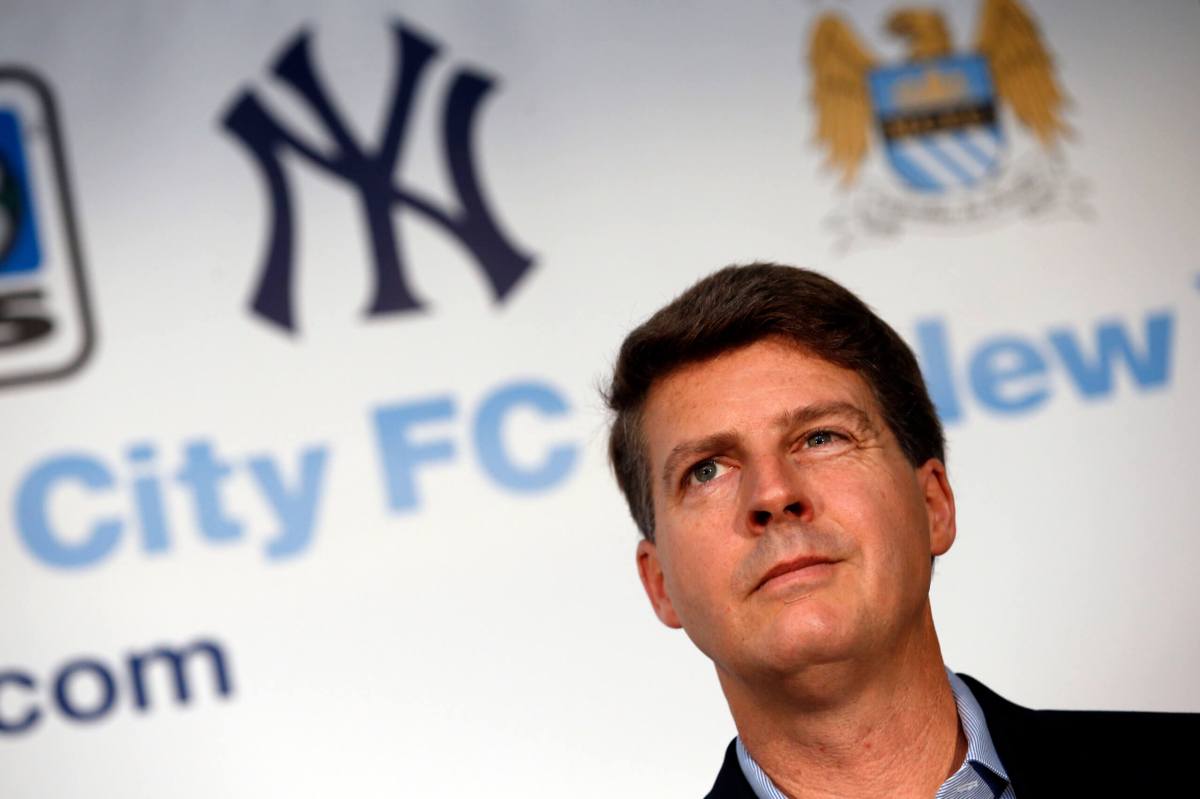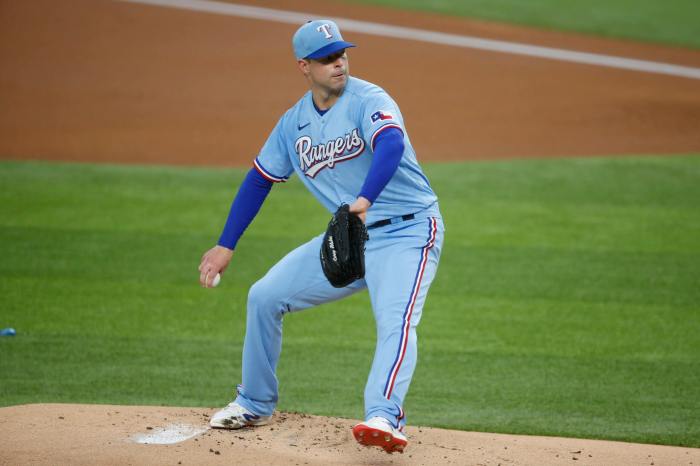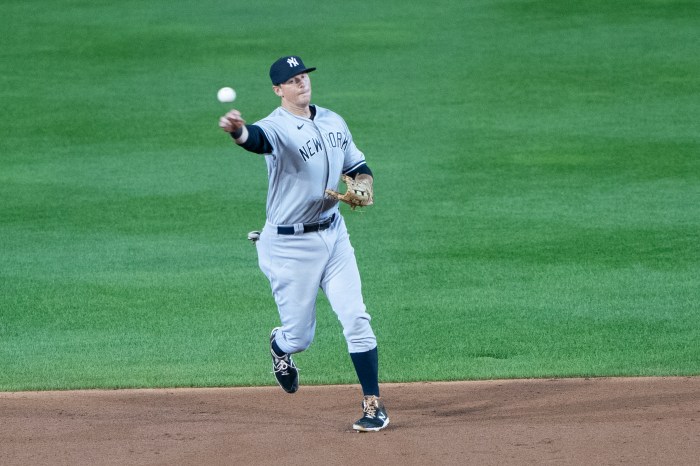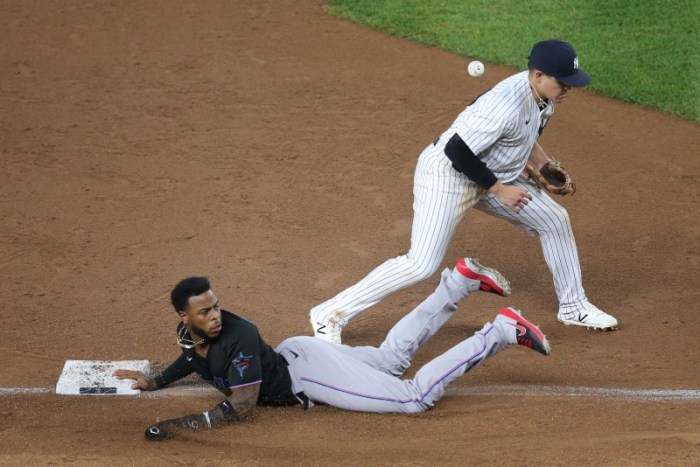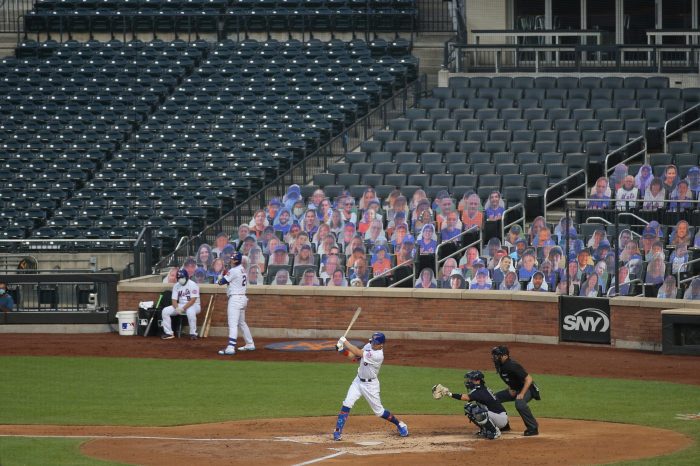This longtime Yankees fan has finally had enough.
At 28 years old, I’ve had the privilege of growing up watching the Yankees win five World Series titles in my lifetime. Of course, most of those championships came before I was 10 years old.
Since their dynasty came to an end in 2000, I’ve seen the Yankees pour a tremendous amount of money into building World Series caliber teams. From the high-priced free agent signings of Jason Giambi and Carl Pavano in the mid-2000s, to the spending spree that brought CC Sabathia, Mark Teixeira and A.J. Burnett and led to the Yankees’ most recent World Series title, it was always clear that the organization put winning a World Series title above all else.
Until it wasn’t.
Under George Steinbrenner, no amount of money was too much. But as his health began to deteriorate and he gave more control of the team to his sons Hank and Hal, the Yankees slowly turned away from recklessly spending on their roster.
The Boss has been dead since 2009, and the Yankees are no longer the team with the limitless bank account — no longer willing to pay any price for victory.
Yes, it’s true that they made big-time signings and trades under Hank and Hal’s leadership. But year after year, the Yankees became less and less reckless, and more and more careful with their spending.
They let Robinson Cano leave for Seattle, unwilling to give him a 10-year contract. Instead, they signed Jacoby Ellsbury for seven years, a deal that will go down as one of the worst transactions in Brian Cashman’s tenure as general manager.
Letting Cano walk is one thing. I was able to get on board not wanting to give him a 10-year deal. But bringing Ellsbury on board instead never made much sense. It seemed like they made a move to show their financial might while at the same time reducing payroll.
That transaction led to some of the worst seasons I’ve witnessed my favorite team play. The Yankees made a plethora of moves, signing veteran players like Andruw Jones and Brian Roberts to cheap contracts and filling the roster with journeymen like Jayson Nix and Stephen Drew.
They made some splashy signings, bringing in established veterans like Brian McCann and Carlos Beltran and taking a chance on an unproven Japanese star in Masahiro Tanaka. But they never seemed willing to spend whatever it took to win a World Series. From the outside looking in, winning was no longer the priority.
Part of the reason why is the Competitive Balance Tax. which is commonly referred to as a “luxury tax.” Major League Baseball defines the luxury tax as follows:
“Those who carry payrolls above that threshold are taxed on each dollar above the threshold, with the tax rate increasing based on the number of consecutive years a club has exceeded the threshold. A team’s Competitive Balance Tax figure is determined using the average annual value of each player’s contract on the 40-man roster, plus any additional player benefits.”
The threshold from 2014-16 was steady at $189 million. But a new Collective Bargaining Agreement went into effect in 2017. That agreement is still in effect and will be through the 2021 season.
In 2017, the threshold rose to $195 million. The threshold has continued to rise, going to $197 million in 2018, $206 million in 2019, $208 million in 2020 and now $210 million for the upcoming 2021 season.
The Yankees, like pretty much every other team in baseball, have used the luxury tax threshold as a de facto salary cap, due to the harsh sanctions handed down for exceeding the limit.
The penalties for exceeding the threshold are as follows:
“A club exceeding the Competitive Balance Tax threshold for the first time must pay a 20% tax on all overages. A club exceeding the threshold for a second consecutive season will see that figure rise to 30%, and three or more straight seasons of exceeding the threshold comes with a 50% luxury tax. If a club dips below the luxury tax threshold for a season, the penalty level is reset. So, a club that exceeds the threshold for two straight seasons but then drops below that level would be back at 20% the next time it exceeds the threshold.
Clubs that exceed the threshold by $20 million to $40 million are also subject to a 12% surtax. Meanwhile, those who exceed it by more than $40 million are taxed at a 42.5% rate the first time and a 45% rate if they exceed it by more than $40 million again the following year(s).
Beginning in 2018, clubs that are $40 million or more above the threshold shall have their highest selection in the next Rule 4 Draft moved back 10 places unless the pick falls in the top six. In that case, the team will have its second-highest selection moved back 10 places instead.”
There’s a lot to unpack here, so let’s simplify it. Owners are not a fan of exceeding the threshold because it means spending more money. For most teams, that is understandable.
But not for the New York Yankees. Or at least it shouldn’t be.
The Yankees essentially print money. Even with revenue sharing, their resources dwarf those of most MLB teams, save for maybe the Los Angeles Dodgers, the Boston Red Sox and, under new multi-billionaire owner Steve Cohen, the New York Mets.
One would think that remaining under the luxury tax threshold would be a secondary goal to winning a championship. But Hal Steinbrenner has proven that is not the case.
The Yankees are willing to exceed the limit every couple of years, only to start pinching pennies to get under the tax and rest the penalties. Under normal circumstances, that is sound logic. But again, these are the New York Yankees.
We’ve seen them trade for former National League MVP Giancarlo Stanton. We’ve seen them sign stud starting pitcher Gerrit Cole. But what we haven’t seen is the club win a World Series.
After making shrewd moves and enhancing their farm system with the 2016 trade deadline deals involving relievers Andrew Miller and Aroldis Chapman, the Yankees seemed to be entering a rebuilding phase for the first time since the early ‘90s. As a fan, I wasn’t thrilled, but I could understand the logic of acquiring top level minor league talent that could eventually lead to another World Series title.
What nobody expected is that the Yankees next contending window opened in 2017, with the emergence of Aaron Judge, Luis Severino and Gary Sanchez. The club’s thrilling run to the ALCS seemed like it could be the beginning of something special. They had a young core, which would add Gleyber Torres and Clint Frazier in 2018. And a young, inexpensive core meant tons of money could be spent filling out the roster.
While Cashman has proved the team is willing to spend with their acquisitions of Cole and Stanton, he has done so without blowing past the luxury tax threshold. Sure, they’ve exceeded it, but they’ve still made moves — and avoided making moves — with the luxury tax in mind.
That takes us to this off-season. The American League has seen the Cleveland Indians trade away star shortstop Francisco Lindor, to the Mets; the AL Pennant-winning Tampa Bay Rays trade away ace pitcher Blake Snell; and the Astros let star center fielder George Springer leave in free-agency.
And the Yankees? Well, the Yankees did well in re-signing perennial MVP candidate DJ LeMahieu. But that move essentially hamstrung the team, which is seemingly committed to staying under the $210 million threshold.
Yes, the Yankees signed former Cy Young Award winner Corey Kluber to a one-year, $11 million contract. Yes, they traded for starting pitcher Jameson Taillon. But both moves can be considered as high-risk, high-reward deals. Between the two of them, Kluber and Taillon combined to throw one inning in 2020 and 74 innings from 2019-20.
Still, the Yankees could’ve done worse. But they also could’ve done better.
They could have traded for Lance Lynn and signed Trevor Bauer to fill out their rotation. But they opted for the cheaper moves instead.
They also let Masahiro Tanaka, who reportedly agreed to a one-year, $7.7 million to return to Japan — leave in free agency. And they traded expensive reliever Adam Ottavino to the Boston Red Sox, their biggest rival, in a salary dump trade.
At a time when some of their biggest competitors have taken a noticeable step back this off-season, the Yankees are refusing to exceed the luxury tax threshold and take complete control of the American League.
While it’s true the most expensive roster doesn’t always win titles, the Yankees have always preached building a championship team year-in and year-out. They have failed to do so since 2009.
This may be their last shot before their championship window with their current core begins to close. Within the next two years, long-term decisions will need to be made regarding Aaron Judge, Gary Sanchez and Gleyber Torres. They will no longer be cheap, young players.
When George Steinbrenner was running things, he moved heaven and earth to keep the previous core of home-grown Yankee greats — Derek Jeter, Mariano Rivera and Jorge Posada — in pinstripes.
If recent history has shown us anything, it’s that the Yankees are unlikely to spend the money necessary to keep the new core intact.
With that in mind, this is the time for the Yankees to go all-in and do whatever is necessary to reach the pinnacle of the sport and clinch their record 28th World Series title, luxury tax be damned.



